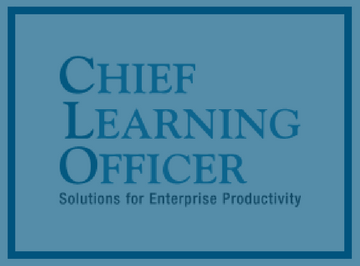Connect Higher Ed and Corporate Learning
Connect Higher Ed and Corporate Learning
Many of today’s chief learning officers are asking higher education to do the impossible: Divine a company’s bespoke future development needs and churn out graduates who can contribute to their organizations on day one.
According to leadership at the University of California at Los Angeles Extension, a top challenge when seeking input from industry on the design of a curriculum of study is to obtain what exactly executives perceive to be their future needs. University instructors must make an effort to cultivate relationships with leadership from industry. But CLOs have the best opportunity to make a better connection between expectations and fulfillment.
This column will examine the divide between corporate learning and higher education as well as ways leaders can bring both sides together. There are significant opportunities to expand the chief learning officer’s role. This new CLO will influence and help lead some of the changing direction within higher education.
But, this new CLO must be able to function as a chief leadership officer who is externally as well as internally focused. These CLOs need to look beyond internal training and talent management to anticipate their employer’s forecasted needs and business objectives. This approach is already starting to happen.
Tamar Elkeles, CLO of Qualcomm, and Tom Clancy, vice president of education services for EMC Corp., are two examples. Under Elkeles’ leadership, Qualcomm is working with The University of California at San Diego to help shape a massive open online course, covering the basics of mobile development using Qualcomm’s microprocessor development boards as the learning platform for students. Qualcomm managers sit on the university committee that reviews the educational material.
Clancy, like Elkeles, has connected with universities. EMC launched the EMC Academic Alliance program to prepare students to fill roles such as data scientists and big data analysts. The company provides its courses as part of a curriculum leading to undergraduate or post-graduate credit. The program teaches skills for information storage and management, cloud infrastructure and backup recovery systems.
In the early days of the EMC Academic Alliance Program, Clancy said that most schools didn’t know EMC. So the organization had to educate the educators. Until 2012, the EMC Information Storage & Management, or ISM, course was the only course it had to offer schools. Most computer science programs focused on application programming and didn’t teach hardware courses. When EMC came out with its course via a Wiley textbook, it gave schools an easier way to adopt ISM. Clancy said that most schools expect a book rather than commercial courseware.
CLOs are uniquely equipped to speak about their companies’ future needs. They can access information and people at all levels of the organization. That access can help them develop a better, more accurate set of requests to give to the higher education community. But CLOs must view their company as a customer that needs highly trained workers who can embrace ongoing innovation.
Majors in app development, market research data mining and user experience design didn’t exist a few years ago. But those areas are jobs now. Innovation requires that lines of business, managers, employees and business partners acquire new skills, create new jobs and find graduates to fill those roles. As the people charged with finding and developing talent, CLOs can connect their customers with colleges. With input from CLOs and a sharper set of industry requirements, learning institutions are poised to become a more significant part of the fulfillment mechanism.
Educating oneself is a personal responsibility, but access to education isn’t merely an end in itself. Companies and higher education working together with students can shape an agenda to better prepare a workforce and make the higher education experience more meaningful for the worker’s future. Now is the time for CLOs to connect higher education and corporate learning.

This column was originally published in CLO.